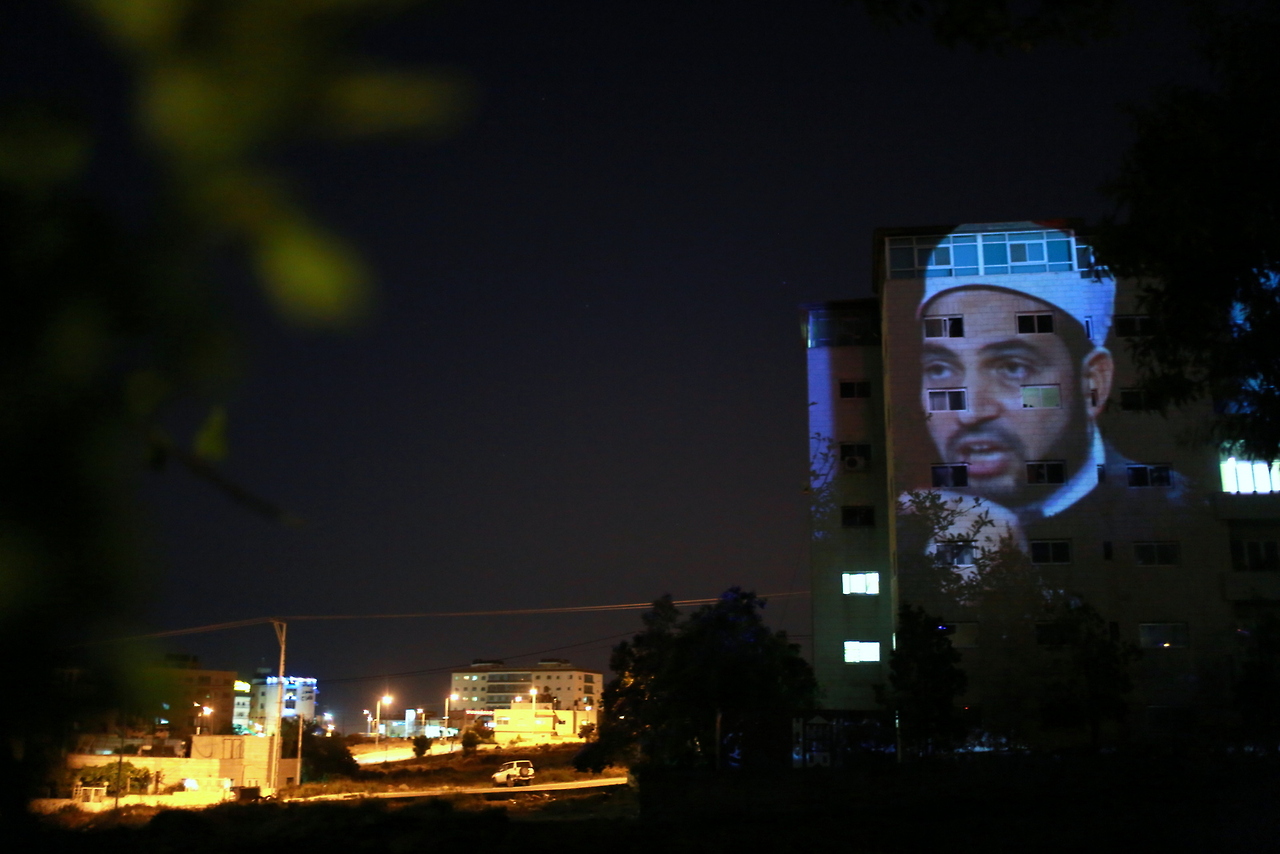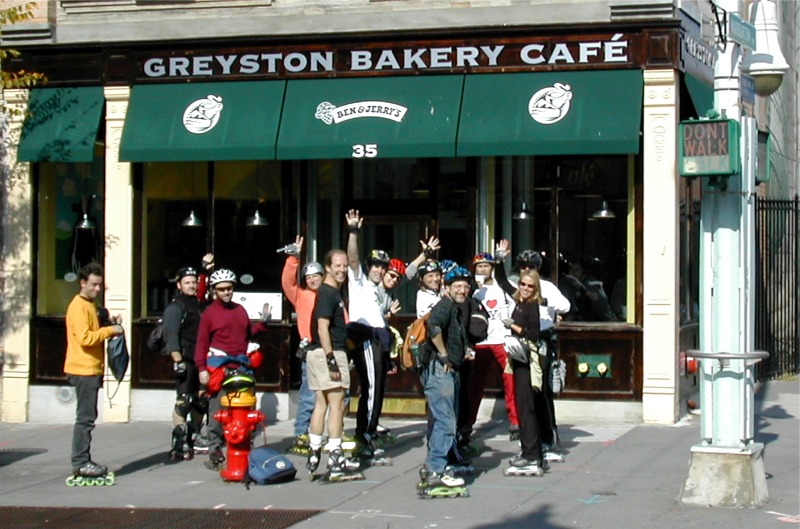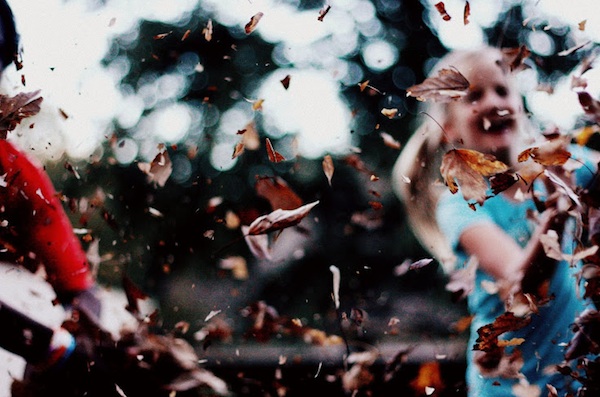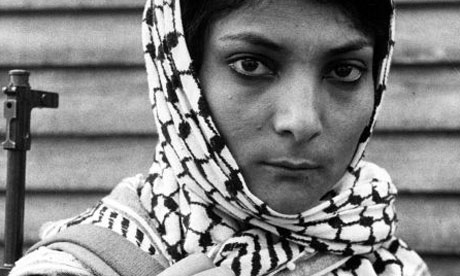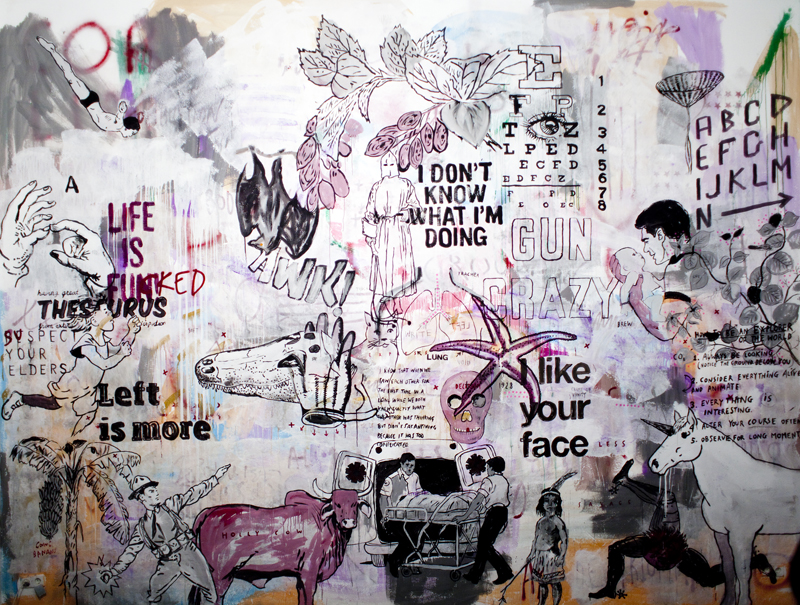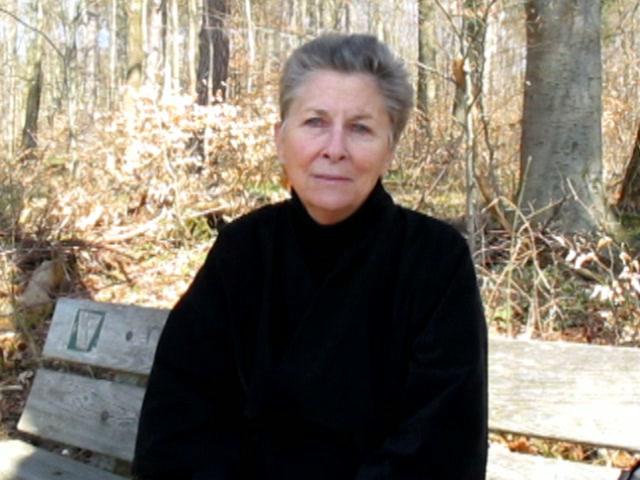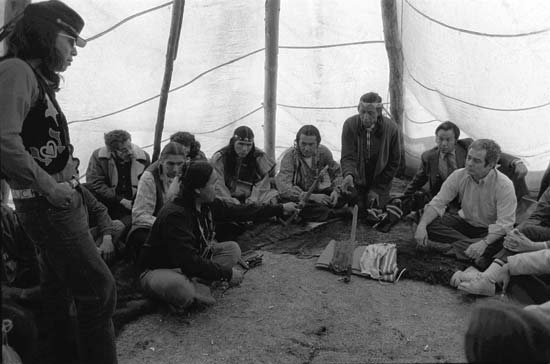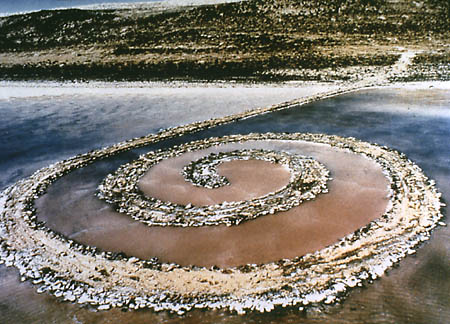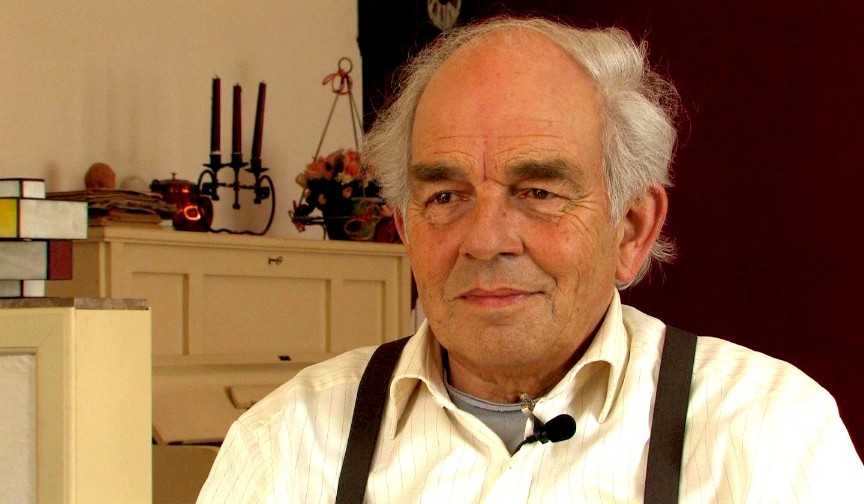From a day long retreat given at Kula, Toronto, Sept. 10, 2011, 25 attending
In 1997 I was on a book tour with Instructions to the Cook: A Zen Master’s Lessons in Living a Life That Matters (Bernie Glassman and Rick Fields) and everywhere I went I got a similar reaction. People thanked me for encouraging them to do something. In my early years with the dharma, I think there was a pervading sense that before getting involved in service or social action you needed to arrive at a certain level of realization. But the book emphasized: don’t focus on what you don’t have. Focus on what you have. Often people say, “I can’t do that because I don’t have money. I can’t do that because I don’t have enough time. I can’t do that because I don’t have enough skills or patience.” We like to come up with reasons why we can’t do things. In other words, we cop out, we postpone doing things. How can we shift this attention, to notice what we do have? We are all bodhisattvas, and we all have different qualities. There are so many different bodhisattvas, the bodhisattva of compassion, of wisdom, of love… And you know what? The bodhisattva of compassion is probably a lousy electrician. Can’t fix plumbing to save his life. But that’s OK, he has other qualities, he’s the bodhisattva of compassion.
I wanted to work with the poor in Yonkers, NY. People asked me: how can you do that if you have no money? I said: that’s because you’re looking in your pockets. If you have $5 and time you make the best meal you can. You concentrate on the ingredients you have – and practices like meditation help us recognize what we have.
For example: I’m hungry. So I open the fridge and notice there’s lettuce and cucumber but no cheese. But I don’t dwell on the cheese. I dwell on the lettuce and the cucumber, because that’s what I’m going to make the sandwich with. I make the best sandwich I can with what’s available. And after I make it, I offer it to others. This is important. The offering is important. And then others come and they bring offerings of their own. Someone brings mayonnaise, the ingredients keep increasing. Sometimes other people can show us what we have, we don’t even know.
I’ve been drawn to situations that I want to work with, and when I’m there a group gathers. The group talks, and every member of the group is an ingredient. The group has to include those we think we’re serving. We’re working with them to create a meal. We’re all in this together. Little by little the number of people grows, and the things we can do together grows.
And we eat multiple meals in a day. We’re not done after breakfast. Oh, we’ve had breakfast, can we all go home now? Forever? No, now it’s lunchtime, it’s a different kind of meal. And we have to keep in mind that people may not like what we’re offering. That’s OK. Why is it OK? Because we’ve made the best meal we can. There’s no possibility of blame in that.
Always start from scratch. Bearing witness to what’s going on. What’s going on? If it’s just one person spouting, telling you what they know, then it’s not as tasty a meal. We want to be involved.
One of my favourite street retreats happens in the Bowery in Manhattan. There’s not a lot of places open for breakfast down there, but every day the Franciscan Church on 31st street hands out baloney sandwiches on rye bread and coffee that’s on the sweet side. That’s what being offered. You don’t have to eat it, but you can appreciate that they’re feeding people who have no other breakfast.
The bodhisattva awakens to the oneness of life – everything I see is me: the museums and shops and soup kitchens. The homeless and the rich, all at once. It’s amazing how much we are. How much we have. When we pay attention to what we have, we see that we have the universe. When we’re doing service work, that realization really comes alive, especially if we have no expectations.
I’ve done work for the past 15 years in the Middle East. There are Zen Peacemakers staff in Israel, Jordan and Palestine. I’ve had a lot of frustration, things have looked impossible, though if I look at the long view I can see that tribes have been fighting for centuries, it’s nothing new. The question is always the same: what’s the best meal I can offer? I begin by working from the tenets: being open, the point is just to keep doing it, and not worry about the results and subjective expectations. When I started doing this work, one of the main ingredients people brought was fear. And a meal of reducing fear is fantastic. If Israelis can reduce their fears that every Palestinian is going to kill them, if Palestinians can reduce their fears about their houses being bombed, that’s a powerful thing.
I spent many years working in Yonkers with homeless people, poor folk. Some people were drug dealers, and the more money they made, the higher the likelihood they had of getting killed. That’s why, even though some of them were making thousands of dollars a day, they were still willing to come and work for minimum wage. They wanted a way out of suffering, they wanted to be part of something larger than themselves. Homelessness in that area is now down by 75%. We created child care facilities, permanent housing, we did lots of work around addiction, AIDS, AIDS housing… Then it was time to hand it over and ask: what’s next? Often I’ll go on retreat and see what comes up. It was my 55th birthday, so I decided to do a street retreat and pose this question: what to do next? The theme was rejection. I invited others to join me. I like sitting in places of power, so we made our way to the steps of the capital building in Washington, DC. My birthday is on January 18, and it’s cold in Washington in January, but that’s OK. In fact, that winter was the coldest in 50 years, which meant we were covered in snow. But there was a big shelter built by a friend of mine – Mitch Snyder. He was a big advocate for the homeless. He was given a huge armoury and he converted it into a homeless shelter. Workers lived on the top floor. A month before the retreat he committed suicide.
NY Times obit: “Mitch Snyder, who became a national figure in giving the movement in support of homeless people a public voice and face throughout the 1980’s, was found hanged today in an apparent suicide. The police said his body, which was found in a closed room at a shelter for the homeless that he obtained from the Federal Government after a 51-day fast in 1984, might have been there for several days.”
His partner invited us to stay in their cafeteria, a huge place. So we sat all day in the snow, and at night we brought blankets to people who were sleeping outside. Mitch had provided blankets to people before his death – there used to be 20-30 deaths each year from the cold in Washington, DC. Mitch had reduced it to two per year.
I asked everyone who joined me this question: what are they going to do about our rejection of others? I thought Zen Peacemakers could be a container for people who wanted to share what they were doing around the world. There are so many beautiful groups around the world – could we inspire each other just by talking? Remember, this is prior to the internet, that digital expression of Indra’s Net. The kind of networking I was envisioning is now happening as a matter of course, because of technology and world events. The Tea Party and the Arab Spring are both examples of this. Our peace depends upon each of us as part of the net, making the meals we can make affects the rest of the net. The biggest influence you have on others is what you do. Whether it’s saying hello to a homeless person in the street or picking someone up – that action changes the whole net. My teacher used to say: the smallest thing has the largest effect.
I’ve never been involved in anti-projects. I’m only concerned with what I can do. With the offerings I feel compelled to give.
After my retreat in Washington I had a big office at the Greyston Foundation, and I found people to take over my role. Some wanted to work with me on a new offering. I wanted to start a Zendo, so we found an abandoned school full of weeds and crack violence. We gathered stones and made a stone zendo and sat in the yard and slowly people started to join us, and out of this small group grew a large community.
Elaine: I was working with people who were lonely and afflicted, and they wanted more than I could give them, and I felt increasingly uncomfortable with the role that the health service was asking me to take on. I felt conflicted and burnt out.
Bernie: One of the ingredients in any meal is yourself. It’s important to befriend your ingredients. You have to befriend the people you’re meeting and working with, but also yourself. You need to know your limits.
I’m writing a book right now with Jeff Bridges, maybe you know him. I was reading a piece from this book this morning, and it was about how to befriend myself. He feels bad because he gets a lot of email and he can’t respond to it and it makes him feel guilty. Sometimes he’ll wake up in the middle of the night and respond but he has a wife and kids, he makes movies and music. The answer is you have to befriend yourself. Each of us is such an important ingredient in our own lives. If we don’t look after it, it affects everything we do.
At Greyston we wanted to integrate the non-profit, for-profit, and religious models of organizations. The for-profit would be the bakery and the construction company. The not-for-profit would be the childcare and AIDS work. Both the for-profit and non-profit pieces had to serve the community and be self sustaining. And underlying it all: we wanted to set up structures and models to realize the interdependence of life. Our goal was to end homelessness and to be self sustaining, at the same time. We wanted to take care of the elements of society that were being rejected or not sustained.
I struck up a friendship with Ben of Ben and Jerry’s ice cream. They offered us a chance to make an ingredient for their chocolate fudge brownie ice cream. This offered us larger opportunities for employment, people who wanted to come off of welfare. We created teams who had to produce a certain amount – if they produced more they would all share in the profits. So as each new person comes in, the new employees become part of a team, and while most of us are busy worrying only about ourselves, it’s now of benefit to every member of the team if this new person catches on and does well. If the person works hard they all make money. If they screw up the team makes less money. If they just want to make enough so that they can go out on the weekend and score more drugs then the team will request that they leave. From a profit standpoint: they are making money. From a non-profit standpoint: it serves the community. From a Zen standpoint: they realize the interconnectedness of life. These goals underlie all of our projects.
These three components are necessary – many businesses have a strong social justice aspect, but they lack the spiritual piece. Greyston feels very different as a result. One day a year there’s a big gathering, and the 180 staff have ‘mandala day’. One year they made a big mural, and you’d think it was done by a Baptist group. I would love any dharma group to come up with a mandala as beautiful as this one. The principle of one family and interconnection underlies everything.
The book Instructions to the Cook outlined five the five main “courses” of life: spirituality, study, livelihood, social action, and relationship and community. There are five Buddhist families within the mandala, the circle of life.
1. Buddha: This is about not-knowing and non-duality. The energy of spaciousness. It’s often placed in the middle of the mandala.
2. Ratma: livelihood, where do your resources come from? The Zen school is also a Ratma family because it is based on lineage. It can be literally translated as “the jewel” and Bernie’s original gloss converts this into something more practical.
3. Karma – action (social action).
4. Vadra: study and trainings.
5. Padma: relationships. (is this the hardest practice of all?)
We’re working with the homeless, but it’s also important for them, like for everyone else, to do community work. Everyone gets involved with social action. The first housing project we did saw 19 new apartments come up, we worked with people in shelters for a year and finally their apartments were ready. On the first thanksgiving we were going to prep a big communal meal and asked them to invite some of the folks from the shelters. They said, no way, we’re not inviting them, we don’t want them around. But we had to find a way to make that possible, to keep saying yes, to open.
Every entity in Greyston was structured with these five components in mind. Even on the board level: are there people here representing all five Buddhist families? If a family member is missing there might be problems. Same with the staff. At Ben and Jerry’s they pride themselves on promoting social action. One of their board members said look, you talk a lot about social action, but there’s no one on the staff who is in charge of it. They said, yes you’re right, and asked him to take on the job.
If we get rid of expectations there’s no way to fail. I have a step mother who lived through the holocaust and as a result, she snuck cream into everything I ate. Because thin equals the camps and fat is good. These days fat isn’t so good, but those were different times. She meant well, but her expectations created a lot of suffering.
Greystone website: “In 1982, Roshi Bernie Glassman, now the best-known American Buddhist social activist, opened a bakery in the Bronx to employ his Buddhist students. Bernie became increasingly aware of local low-income community needs in neighboring Yonkers, a city that borders the Bronx and contains the largest concentration of poverty in affluent Westchester County. Bernie moved Greyston Bakery to southwest Yonkers in 1987, declaring an open door hiring policy. Out of this hiring policy a new and larger mission grew. Greyston Foundation developed holistic, comprehensive-services and rapidly became one of the most successful examples of social enterprise in the United States. Today, Greyston serves over 2,200 community members annually. Greyston’s integrated network consists of for-profit and not-for-profit entities that provide jobs, workforce development, low-income housing, supportive services, childcare, after-school programs, comprehensive HIV health care and housing, community gardens and a new bakery facility that supplies the ice cream industry with brownie chips.”
One of our partners in the Middle East is Sami Awad who lives in Bethlehem. The distance between Bethlehem and Jerusalem is very small – maybe ten minutes by car. The main road to get into Bethlehem has a security checkpoint and it’s loosened up a great deal in the last few years. Though it remains illegal for Israelis to go to the West Bank and it’s illegal for Palestians to travel to Israel. Of course there are still Israeli Palestinians.
Sami’s uncle, Mubarak, was called the Ghandi of Palestine. in 1984 he established the Palestinian Centre for the Study of Nonviolence. He was exiled by Israelis, and then, inspired by his father’s example, Sami founded the Holy Land Trust in 1998 to promote Palestinian nonviolent resistance to the Israeli occupation. Ten years ago I was sitting in a hotel in Amman, Jordan – we were holding communal circle groups. We couldn’t meet in the West Bank because the Israelis couldn’t get in, and we couldn’t meet in Israel because the Palestinians couldn’t get in, and we couldn’t meet in Lebanon because they wouldn’t admit Palestinians. We were talking about how things were going, and Sami said that he was concerned that Arafat would assassinate him because he didn’t like the non-violent work that was being done. Hamas and Fatah felt that non-violence was traitorous. But still Sami continued. There are peaceful protests and actions taken every Friday that may not be in the headlines every week, but the work continues. This is the meal that Sami can make. He joined our Auschwitz retreat last year, and brought with him other Palestinian leaders. That retreat transformed his view. He felt that his work was not only in Palestine, but that the world world needs his non-violent address. He’s introduced daily meditation practice and council into a Palestinian culture that is basically Muslim and Christian.
A couple of years ago he ran for office in Bethlehem and didn’t win. When we saw him again this May, my wife asked him if he would run again. He said no, after the Arab Spring, he felt the political scene, or traditional politics, was not where it was at. The awakening in that part of the world is so profound that leaders don’t know what to do with all that energy. He said that both Hamas and Fatah had approached him and asked if he could train their leaders in techniques of non-violence. This represents a complete change of attitude. This is the energy of interconnectedness at work. It does all kinds of things we can’t imagine.
For years I was frustrated and upset about the plight of the Palestinians. I had expectations. I tried to notice what was happening and to befriend myself. My expectation was that Israel as a country would be menschikeit. Mensch means human, or a human that is service oriented but doesn’t think of themselves as being service oriented. You can’t find too many countries today that exude that spirit. After talking with Sami my hope rose again and I was able to let go of my expectations. The manifestation of Indra’s net in the Arab Spring created an enormous outpouring of energy, and the first impulse is often: how can I control this energy? Instead of: I’m ready to serve this energy in whatever way it needs me. As a result, I’ve volunteered to help Sami with non-violent work in Palestine, to balance the inter-faith work we’re doing in Israel.
Hope can take the place of expectation. Hope is now, expectation is the future.
Do people here know about the Israeli Summit? There was a young woman in Tel Aviv who lost her apartment because she couldn’t afford it. She decided to take her tent and put it on Rothchild Avenue – a very ritzy street. Within a week 10,000 people had pitched tents in Tel Aviv and Jerusalem, demanding social change. The next Saturday 50,000 arose, the following week it was 150,000, the week after 250,000, and that was the largest gathering in the history of the country. There are only 7.7 million people in all of Israel. A week later, just a week ago, there were half a million people in the streets. Why were they there? Zionists came out to advance their cause, some wanted a lower price for cottage cheese, others wanted lower housing costs, new forms of government, doctors wanted better medical service, parents wanted better childcare, people in Haifa protested the conditions for Israeli Arabs.
The protestors were criticized because they weren’t organized. But these were all people saying they wanted a new system, and this is the energy of Indra’s Net.
It’s so hard to bring the conflicts within ourselves to an end, there’s so much work to do – we don’t have to find a final solution, thinking there’s an end only leads to discouragement and resignation. In the early days of Zen in North America there was some sense that there was some final state of enlightenment, rather than what AA calls walking the steps. There’s no place that you’re sober – it’s an endless path. There’s no final place to get to. That’s what makes it fun. You have a lifetime of work to do.
“Working to end homelessness” – it’s a hook, it’s a sucker trap, it’s good PR. It really means honouring people who want to be homeless, like some of the holy men who are respected in India. Over here in North America, the homeless are not respected. I was working in a very poor place with something like 300 families, homeless and poor, often single parents. But they were in Westchester county which had enough money to take care of the problems. I was throwing out “ending homelessness” as a challenge.
What do you when you get tired? I lie down. I nap each day, sometimes 3-4 times a day. I stretch out. I never say: Don’t get tired. I never say: What? Are you tired already? If I’m thirsty I try to drink something.
Zen: if it’s not your daily life, it’s not Zen. Who said that? In the tradition I was trained in, if it’s not your every moment, then you’re not doing it. And you can’t do it every moment. Up to 1985 whenever I gave a talk I was often asked this question: how do you bring Zen into daily life? But the more I got involved in social actions, the more these questions fell away.
Having certain periods where you do sitting meditation – that’s part of life. Asking how do I incorporate Zen into my life is like asking how do I incorporate breathing into my life? How do I incorporate eating into my life? Everything we do is Zen. Or it could be Zen. Zen is a synonym for life. You should appreciate your life. I don’t see Zen as a piece of what we do. We do many things in our life, and if you do them from a standpoint of non-duality then the quality of your life changes dramatically.
Spiritual practice grounds social action. How does zazen make your social action different? There are three tenets: not knowing, bearing witness, loving action. I experience and deepen the state of not knowing through meditation. What is this? Others use other methods. Meditation isn’t the best or only method, it’s the path I’ve taken and there are many beautiful paths. What I call practice is anything one does in a state of non-duality.
The Platform Sutra records the teachings of Hui-neng, the Sixth Patriarch, who is revered as one of the two great figures in the founding of Ch’an (Zen) Buddhism. He says that zazen is the state where there is no separation between subject and object.
Roshi Joan Halifax is an amazing woman and she was starting up a new zendo. She had invited a number of spiritual elders for the opening – a Native American, a Christian priest, I was the Buddhist rep. She showed Eve and I the room where we could stay and said, “Bernie, please don’t smoke indoors.” Because she knows that I like cigars. I assured her it wouldn’t be a problem. During the ceremony there are various blessings and incantations, and then the Native American lights up his pipe full of tobacco and passes it around the Zendo. Joan, why did you let that guy smoke? It’s complicated.
From Wikipedia: The Iroquois are an association of several tribes of indigenous people of North America. After the Iroquoian-speaking peoples coalesced as distinct tribes, based mostly in present-day central and upstate New York, in the 16th century or earlier, they came together in an association known today as the Iroquois League/Confederacy. The original league was often known as the Five Nations, as it was composed of the Mohawk, Oneida, Onondaga, Cayuga and Seneca tribes. After the Tuscarora nation joined in 1722 the Iroquois became known as the Six Nations.
The Iroquois refer to themselves as the “Haudenosaunee”, which means “People of the Longhouse,” or more accurately, “They Are Building a Long House.” According to their tradition, The Great Peacemaker introduced the name at the time of the formation of the League. It implies that the nations of the League should live together as families in the same longhouse. Symbolically, the Mohawk were the guardians of the eastern door, as they were located in the east closest to the Hudson, and the Seneca were the guardians of the western door of the “tribal longhouse”, the territory they controlled in New York. The Onondaga, whose homeland was in the center of Haudenosaunee territory, were keepers of the League’s (both literal and figurative) central flame. The French colonists called the Haudenosaunee by the name of Iroquois.
According to tradition, the League was formed through the efforts of two men, Deganawida, sometimes known as the Great Peacemaker, and Hiawatha. They brought a message, known as the Great Law of Peace, to the squabbling Iroquoian nations. The nations who joined the League were the Seneca, Onondaga, Oneida, Cayuga and Mohawk. Once they ceased most of their infighting, the Iroquois rapidly became one of the strongest forces in 17th- and 18th-century northeastern North America.
The Peacemaker taught the practice of council and using this tool managed to unite the tribes. The tribes had the longest peace of any nation on the planet – it’s not so common for nations to be at peace. When the tribes wound up in difficulty they would call council. These councils influenced early Euro-North Americans, like Benjamin Franklin. Much later, people like Joan Halifax became very inspired by council, and students like Jack Zimmerman and Virginia Coyle were very enthusiastic about it, and introduced it into the Los Angeles school system. In 1994-95 Bernie decided to introduce it into Zen Peacemakers and its affiliates, perhaps 20 or 30 of the groups now use council.
Rules of the game
1. Sit in a circle (sometimes it’s called Circle Practice)
2. Nen – Japanese term, an important Buddhist expression. The Chinese ideogram carries two ideas: now, mind. I translate this as: mind of this moment, or the sound of one body. Sometimes it’s translated simply as “mind.” We’re used to hearing thoughts of ourselves, but this is the mind of one body speaking. Kan Ze On – kan means contemplate, ze is earth and on is sounds. A bodhisattva contemplates the sounds of the earth. Kan Ze On is the Japanese name for the bodhisattva of compassion, aka Kwan Yin, or Avalokitesvara.
When I learned about council I thought: wouldn’t it be interesting to introduce it into the zendo, alongside the work I was doing with meditation. In Soto Zen sitters face the wall, in Rinzai they face into the room. We had a member of the LA Zen Centre who was a benefactor – if we were a thousand bucks short at the end of the year she would make up the difference. She said, “We shouldn’t have so many distinctions between all these different schools of Zen. Last week I went to visit Sasaki Roshi, who you may know is the person that Leonard Cohen studies with, and they sit facing each other. We have to teach them the right way to sit! Facing the wall!” Oh, is that how we’re going to come together? By teaching them the right way?
How can we move from a notion of individual enlightenment to a circle practice? How can you enlighten a circle? The voices in council are the voices of the circle not the voices of individuals.
3. We listen from the heart, that is, we listen in a state of not-knowing. No judgments, no getting ready to do battle. We are going to bear witness to what someone is saying, we’re not going to be reacting, we won’t say that’s good or that’s bad.
4. We speak from the heart – we don’t go back to what someone else said. We speak spontaneously, from whatever arises in that moment. You’re not thinking about what you’re going to say, you’re not trying to look sharp.
5. Always use first person language. “I feel…” You don’t need to say, “She made me angry,” but instead, “I feel angry…”
6. Lean speech: When someone is talking, we listen from the heart. We don’t ask: why is she taking so long? But when we’re speaking we try not to go on too long.
7. Confidentiality. This makes a safe space. We’re not going to talk about what we heard outside the circle.
8. Avoid cross-talk.
There are different forms of circles and the form we’re going to practice is called THE SPIRAL. We’ll start with five people in a circle. The theme is: what do I want to do to serve the world? (The world could be just me.) There is a candle in the middle of the circle. The first person will light the candle and create a sacred space, and offer that space, dedicate that space to… something reasonable.
The czar of Russia went to the hospital to visit war veterans. She asked the first person she visited, “What would you like?” The man answered, “Peace in the world.” She asked the second man she visited, “What would you like, more than anything in the world?” He answered her, “Sound health for everyone.” She approached a third man and asked, “What would you like, more than anything in the world?” He answered, “A pastrami sandwich.”
Then the first person will take up the talking piece and speak, and then hand it over to the person on their left. The rest of us are going to bear witness to what each person says, without deciding whether it’s good or it’s bad, right or wrong. After two people have spoken, and the talking stick passes to person number three, the first person who has spoken returns to their cushion, and someone else will come in and takes their place. We will all circulate through these cushions. After we’ve all spoken I’ll put this question to you: what did you hear? I’m not asking you to explain or comment on what you heard. I’m not asking you for your opinion. Though when we listen deeply we are always listening through a part of ourselves. So part of listening is already projection, it’s inevitable. We’ll all hear different things. Saying what we heard adds new voices to the council/circle.
Is council a good way to make decision? No. We do it as a practice of transformation. It’s a way to express our emotions and feelings. It expresses where we’re at.
The Zen Peacemakers form of organization is derived from Gerard Endenburg, a Dutch engineer, a sociocratic method of organization. He saw that most systems have feedback to keep it stable, but most organizations become unsable because they don’t have any feedback mechanisms. He designed a structure that saw a number of interlocking circles – folks were elected by “lower circles” so circles were all interconnected.
From the Sociocracy website:
The sociocratic method is an “empty” (or “generalized”) method. That is, it can be applied to every kind of organization. The sociocratic method starts from the concept that people are unequal, unique persons who should be made equivalent by decision-making.
The Dutch businessman who developed sociocracy, Gerard Endenburg, has been striving to create a system that maintains equivalence” between participating members. He come up with these four main principles
Governance by Consent
Circle Organization
Double Linking
Elections by Consent
Circle Organization: Each circle has its own aim, performs the three functions of directing, operating and measuring (feedback), and maintains its own memory system by means of integral education.
Double Linking: Coupling a circle with the next higher circle is handled through a double link. That is, at least two persons, the supervisor of the circle and at least one representative of the circle, belong to the next higher circle.
Dharma teachers are often schooled in the dharma, in delivery, but not in community decision making. Traditionally organizations have been run on a hierarchical model, with one or two people making all the decisions. How inspiring to have processes that can engage entire groups. The circles of decision makers are an image of interdependence. Interdependence should be reflected in the organization of organizations. How to continue to realize and express the project of interdependence? The inherent interconnectedness of all life.
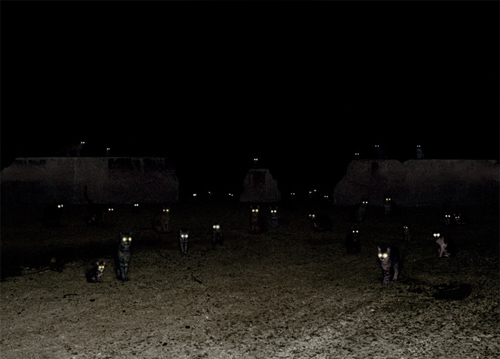
![anett holmvik 4[6]](http://mikehoolboom.com/thenewsite/wp-content/uploads/2013/09/anett-holmvik-46.jpg)
![andy denzler 1[6]](http://mikehoolboom.com/thenewsite/wp-content/uploads/2013/09/andy-denzler-16.jpg)
